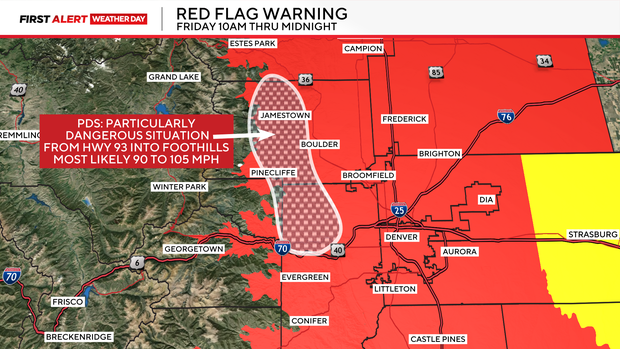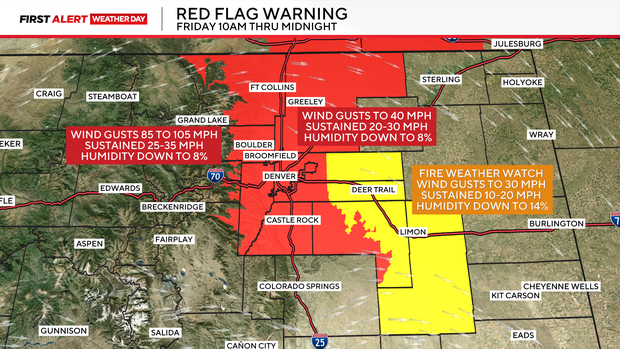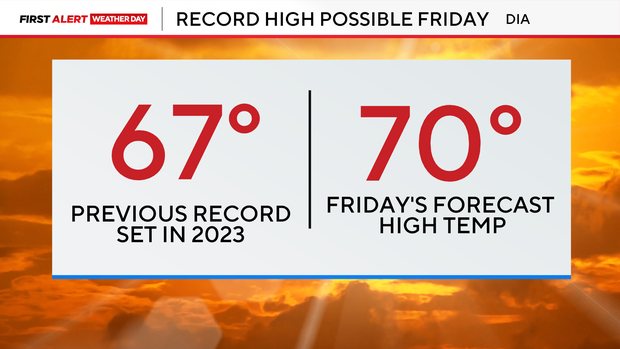Colorado
Here’s what Colorado concert season holds for music fans in 2025

There’s plenty in store for the Front Range concert scene in 2025, from a jam-packed Red Rocks Amphitheatre calendar to higher ticket prices and massive tours at Colorado’s biggest venues.
Here’s a handy preview.
Higher ticket prices
The average ticket price is expected to rise again in 2025, with promoters blaming ballooning costs on unprecedented demand. In addition to inflation, digital scalpers are gumming up the works, prompting false sell-outs the minute many shows go on sale and sending some fans to the secondary market, where prices usually skyrocket. And if you’re able to snag them, solid seats at Ball Arena, Red Rocks or Dick’s Sporting Good Park will rarely dip below the $50 mark, with many tickets topping $100 (or much, much more).
In 2024, the average price of a ticket for one of the top 100 tours was $127.38, which was 9.4% higher than in 2019, and an all-time high, according to Pollstar. Even before the pandemic, prices were creeping skyward: Boulder Weekly reported that Red Rocks tickets jumped more than 60% between 2018 and 2024. Concerts look to increasingly become a luxury item for a society whose wealth gap is growing at an alarming rate.
Tours and cost-reckoning
Canceled shows due to low ticket sales dotted 2024, with embarrassing about faces from The Black Keys, Jennifer Lopez and others angling for full-scale arena comebacks. This year looks to be more measured in its tour launching, with proven acts slotting comfortably into the biggest venues and mid-sized and smaller acts owning the city’s historic theaters and indie clubs.
On the bright side, Colorado consumers can now see the full list of taxes and other fees before buying their tickets, thanks to recent legislation. That helps in the decision-making process and offers more transparency on the true cost of your purchase.

Huge shows are not going anywhere
Taylor Swift dominated the national music sphere in 2024 with an “Eras” tour that sold out a pair of shows at Empower Field at Mile High. Slightly less top-of-mind but still huge acts Coldplay (June 10), Post Malone (June 15), and Metallica (June 27-29) are hitting Invesco Field in 2025. Coors Field is also likely to unveil more concerts on the level of 2024’s Billy Joel, Green Day, Kane Brown and Journey/Def Leppard shows.
At Ball Arena, which remains the metro area’s dominant arena, already-announced shows feature Rod Wave, Sebastian Maniscalco, Justin Timberlake and a multi-night run from Billy Strings — and that’s just in January. More notables include Tyler, the Creator (Feb. 11); Mary J. Blige (Feb. 25); Kylie Minogue (April 29), Andrea Bocelli (June 17); Linkin Park (Sept. 3), and comic Nate Bargatze (Sept. 12-13).

Venues — and their neighbors
As Broomfield’s FirstBank Center has fallen to the wrecking ball, there are glimmers of new venues along the Front Range. What that means for fans is that certain shows may be much closer to home. Colorado Springs music lovers no longer need to drive to Denver to see some Red Rocks headliners thanks to the city’s new Ford Amphitheater. That controversial outdoor venue continues to rankle some neighbors over noise issues, which have prompted critics to take their case to local politicians and the news media. (Venu, the owner of the amphitheater, recently launched a defiant marketing campaign that dubbed itself “Fan Founded. Fan Owned,” and claimed that the AEG Presents-booked amphitheater was a disrupter in the industry.)
In Loveland, the home of Blue Arena, Larimer County in December finalized a 70-acre purchase on which the Ranch Events Complex plans to grow — including building yet another new venue. We’ll see what kind of capacity and booking it has when it’s finished (likely not this year, since it hasn’t even broken ground) but it promises even less of a reason for people who live in the head into metro Denver.

Whither the weather?
Extreme weather will continue to poke holes in the calendar, as it has over the last couple years due to wind, hail and other safety-prompting concerns. Certainly, unpredictable weather has long been a factor at Colorado’s hundreds of annual outdoor concerts, from early-season snow to summer hail and fall/winter ice. And yet, seemingly unprecedented events continue to occur, potentially giving pause to fans who were excited about open-air music. Meteorologists have said climate change in 2024 was largely to blame for the rising number of storms and long bouts of extreme heat.
Red Rocks Amphitheatre’s Louis Tomlinson concert in 2023 turned into a wailing mess as nearly 100 concertgoers were treated for bloody lacerations, broken bones and other injuries due to a solstice-coinciding hail storm (seven people required hospitalization). That year also saw tours in which heat, dust and wildfire smoke affected Pearl Jam frontman Eddie Vedder’s voice in Paris; “Jason Aldean collapsed onstage from heat stroke during a performance in Hartford, Conn.; and Disturbed canceled a Phoenix gig because their equipment wouldn’t turn on in the 117-degree heat,” Billboard reported.
“Fans, meanwhile, have been forced to evacuate to tents, cars and bathrooms amidst storms, and risked overheating both at Ed Sheeran’s Pittsburgh show in July and Las Vegas concert in September,” according to the report. We also saw Burning Man take a major hit from extreme weather in August, from dust storms to mud, which has hurt ongoing ticket sales for the desert festival in Nevada.
In 2024, shows from Foo Fighters, Hozier, Pink, AJR and others were canceled internationally due to extreme weather, Rolling Stone reported, including a May 4 show from Hippo Campus at Red Rocks that was scuttled due to dangerous winds.
Colorado’s outdoor venues, from Red Rocks and Levitt Pavilion Denver to the 18,000-seat Fiddler’s Green Amphitheatre, are all vulnerable to extreme weather. At all of them, consider bringing seats or something sturdy to shelter under, in addition to the usual ponchos and cold-weather gear, and carefully watch weather reports on your phone.
Subscribe to our weekly newsletter, In The Know, to get entertainment news sent straight to your inbox.

Colorado
Avs’ home heater continues as Colorado beats Winnipeg 3-2 in chippy win

The Avs on home ice remain as close to invincible as a sports team can get.
Colorado beat Winnipeg 3-2 on Friday at Ball Arena, improving to 14-0-2 in Denver. The win extended the longest home point streak to start a season in franchise history, and the Avs’ 12th straight victory at home is the longest in the NHL this season and second-longest streak in franchise history.
“When other teams play here, it’s tough to come into this building,” defenseman Josh Manson said. “When the fans get behind us, momentum shifts. We score a goal, they get loud, the building gets rocking and the momentum starts to carry and we can feel it. And from there, we can start pouring it on.”
The Avs didn’t play perfect on Friday, giving up a shorthanded goal and battling through several Winnipeg surges after reigning Hart Trophy and Vezina Trophy winner Connor Hellebuyck settled into the game.
But as they have all season, Colorado found a way to win in front of the Avs faithful in a game featuring four scuffles, highlighted by a fist fight between Manson and the Jets’ Tanner Pearson. The Avs’ only home losses this year came in a pair of 5-4 shootout setbacks, to Dallas on Oct. 11 and Carolina on Oct. 23.
Since then, Colorado’s been a sure bet to prevail at “The Can.”
“This was one of our better defensive efforts of the year — physical, and we spent some time in the D-zone in the second period and didn’t give up any dangerous chances five-on-five really,” Avs head coach Jared Bednar said. “Made a mistake on the power play, made a mistake on the penalty kill, but besides that I liked our game tonight.”
The Avs started fast against struggling Winnipeg, which has battled injuries and inconsistencies while looking like a shadow of the team that won last season’s Presidents’ Trophy. Colorado blitzed Hellebuyck with a number of quality shots in the first 10 minutes, then finally broke through with Brent Burns’ goal.
“Right from the drop of the puck, we were taking it to them,” Manson said. “… (During this stretch of home dominance) we’ve set the pace on teams.”
Burns, the oldest active NHL player, wristed one home from behind the right playoff circle as his shot deflected off the skate of a Winnipeg defender to make it 1-0.
Five minutes later, Colorado made it 2-0 thanks to a highlight-reel combination between Nathan MacKinnon and Martin Necas. MacKinnon, tied with Edmonton’s Connor McDavid for the NHL points lead entering the night with 58, made a precise pass that split two defenders and found Necas streaking down the center of the ice. Necas beat Hellebuyck on the bottom right shelf.
“When we beat them up ice, we’re capable (of finishes like that),” Necas said.
But in the second period, Hellebuyck tightened up, turning away several scoring chances as the Jets killed three Avs power plays and the crowd buzzed off of Manson’s fight with Pearson.
After both players went to the penalty box just under three minutes into the period, the jumbotron cam jumped from Manson to Pearson, with the former getting met with deafening cheers and the latter with a chorus of boos.
“(That) gets you fired up a little bit,” Parker Kelly said.
But on Colorado’s third man-advantage of the period, the Jets stole the momentum back with a short-handed goal.
Off a Hellebuyck save, Alex Iafallo possessed the puck and cleared up ice high off the glass. Morgan Barron outskated Cale Makar down the ice to retrieve the bouncer, then beat Scott Wedgewood one-on-one with a backhanded shot to quiet the crowd and make it 2-1 with 37 seconds left in the frame.
“We weren’t worried after that,” Manson said. “If anything, I was thinking in my mind, ‘We’re going to go get one here at the start of the third period.’”
The Avs did just that.
Less than two minutes into the third, Colorado grabbed the mojo right back. Manson blasted a shot from up near the blue line, which deflected off a screening Kelly and past Hellebuyck for a 3-1 lead.
“I saw it go to low to high and I just tried to beat my guy to the net,” Kelly said. “(Manson) was walking down mainstream. Honestly, I was just there to try and provide a screen. I thought (Manson) was going to rip it. I don’t know if it got tipped, but the shot was along the ice and my stick was on the ice. Just tried to get a little touch on it.”
But the Jets quickly answered about 90 seconds later, capitalizing on a hooking penalty on Devon Toews as Mark Scheifele scored just seven seconds into Winnipeg’s power play to again make it a one-goal game.
Midway through the period, the Avs had a goal wiped off the board. Kelly deflected the puck into the net off a shot by Samuel Girard, but Kelly used high-sticking to do it, negating the score.
From there, Wedgewood and the Colorado defense held on as the Avs notched their 56th and 57th points of the season. Wedgewood made 20 total saves, including two saves in the final minute to seal the win for Colorado (25-2-7).
“We got heavy around the net, and Wedgie played great between the pipes,” Manson said. “We were making good decisions with the puck at the end of the game… We made smart plays and didn’t force anything in the last eight, 10 minutes of that game.”
The longest home win streak in Avs history came during their championship season in 2021-22, when Colorado won 18 straight in Denver from Nov. 11 to Jan. 30.
Want more Avalanche news? Sign up for the Avalanche Insider to get all our NHL analysis.
Colorado
Several Colorado highways temporarily closed due to high winds

BOULDER, Colo. (KKTV) – Several Colorado highways are closed due to high winds reaching up to 80 MPH in some locations.
According to the Colorado Department of Transportation (CDOT), the closures currently in place include:
- CO 93 both directions from 64th Ave (Arvada) to CO 170.
- CO 72, both directions from CO 7 to Ward Road.
- US 36, both directions from Boulder to Lyons.
- CO 128, both directions from CO 93 to McCaslin Boulevard.
Transportation officials said the winds may also cause traffic signal outages.
If traffic lights are experiencing a power outage, CDOT said drivers must treat it as a four-way stop:
- Come to a complete stop at the stop line or before entering the intersection.
- Vehicles proceed one at a time, in the order they arrived.
- If two vehicles arrive at the same time, the driver on the right goes first.
- Always yield to pedestrians and cyclists already in the crosswalk.
- Make eye contact when possible and proceed cautiously – do not assume others will stop.
Drivers are also encouraged to reduce speeds, keep both hands firmly on the steering wheel, and be alert for debris, downed signs and sudden gusts. High-profile vehicles, such as trucks, vans and vehicles towing trailers, are encouraged to avoid travel when closures or restrictions are in place.
CDOT also reminds commercial drivers to ensure tire chains are properly secured and not dragging, which can create sparks and increase wildfire risk during dry, windy conditions.
Copyright 2025 KKTV. All rights reserved.
Colorado
Dangerous fire situation looming for parts of Colorado’s Front Range, as another day of strong winds lies ahead

Dangerous weather conditions in Colorado are expected to team up for a surge in the Front Range fire danger. For most of the day Friday conditions will be favorable for rapid fire spread. Avoid outdoor burning and any activity that may produce a spark. Friday will be a First Alert Weather Day.
The triple threat of hurricane force winds, record heat and single digit relative humidity will all be in force from 10 a.m. to midnight on Friday. That is when a red flag warning for high fire danger is issued.
For the first time in Colorado, the National Weather Service office in Boulder has issued an extra warning know as “A Particularly Dangerous Situation” for northwest Jefferson and western Boulder counties for possible wind gusts of 85 to 105 mph.
The worst areas will be from Highway 93 up into the higher foothills. That, combined with single digit relative humidity, will make conditions worse that what the state experienced on Wednesday.
For the northern Front Range, the strongest winds will be west of I-25 into the foothills. Along and east of the I-25 corridor including the Denver metro area, winds may gust up to 40 mph with humidity levels as low as 8%. For that reason, the entire Denver metro area is in the warning area.
The strong winds will be warming downslope winds for eastern Colorado with highs on Friday shooting up into the 60s and 70s. Denver may have a new record high of 70 degrees. The old record is 67 degrees last set in 2023.
Top wind gusts may likely be stronger than Wednesday. Those gusts were hurricane force in some areas of the foothills and mountains with gusty winds comparable to those of a category 2 or 3 hurricane.
-

 Iowa5 days ago
Iowa5 days agoAddy Brown motivated to step up in Audi Crooks’ absence vs. UNI
-

 Iowa7 days ago
Iowa7 days agoHow much snow did Iowa get? See Iowa’s latest snowfall totals
-

 Maine4 days ago
Maine4 days agoElementary-aged student killed in school bus crash in southern Maine
-

 Maryland5 days ago
Maryland5 days agoFrigid temperatures to start the week in Maryland
-

 Technology1 week ago
Technology1 week agoThe Game Awards are losing their luster
-

 South Dakota6 days ago
South Dakota6 days agoNature: Snow in South Dakota
-

 New Mexico3 days ago
New Mexico3 days agoFamily clarifies why they believe missing New Mexico man is dead
-

 Nebraska1 week ago
Nebraska1 week agoNebraska lands commitment from DL Jayden Travers adding to early Top 5 recruiting class






















